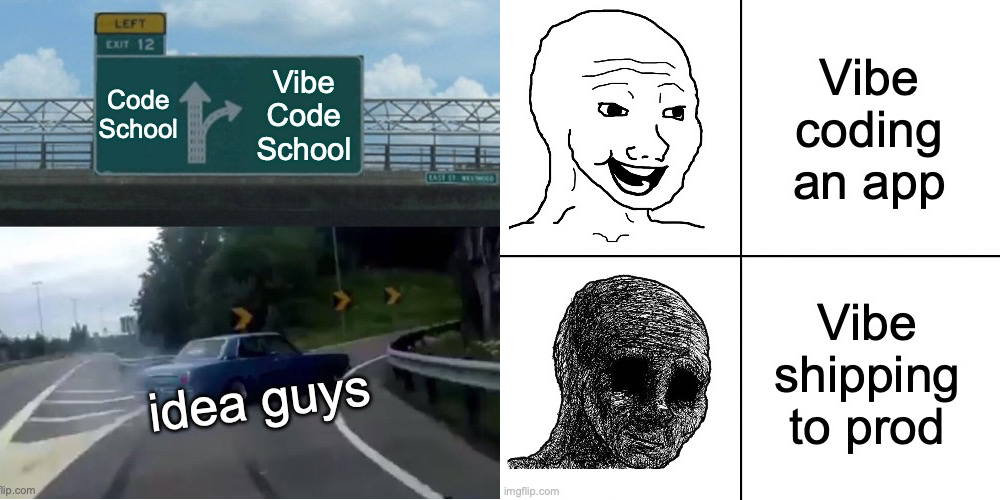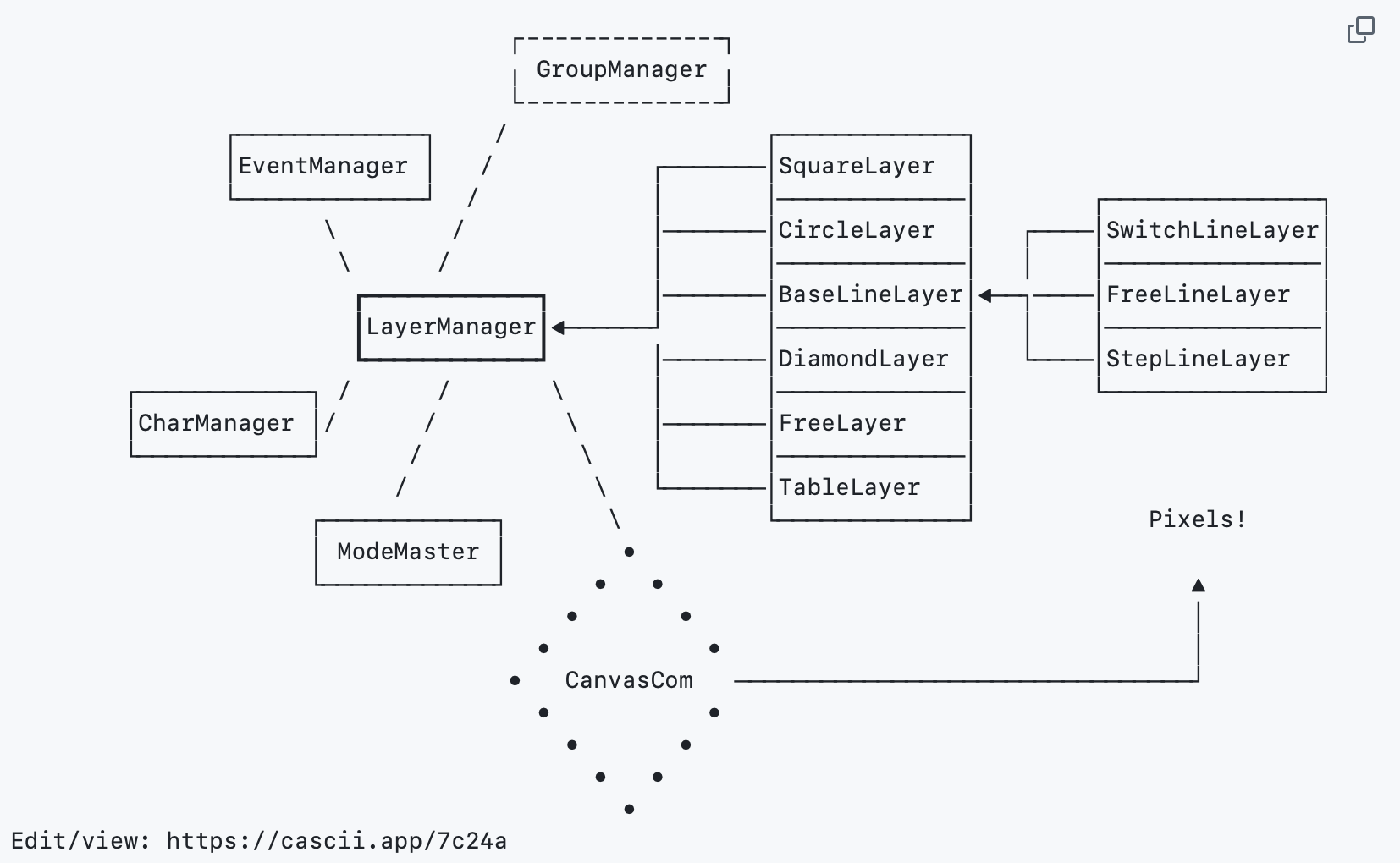Changelog News
Developer news worth your attention
Jerod again! 👋
IKEA is tapping in to our collective enjoyment of all things Severance with a new ad campaign highlighting their minimalist desks, acoustic screens, and moody lighting that they say is perfect ‘for work that is mysterious and important.’ Well played, IKEA. Well played.
Ok, let’s get into this week’s news.
🎧 Here’s my Siri theory
Justin Searls from Breaking Change joins the show to discuss Apple’s Intelligence blunder, the end of the good times in the tech industry, and POSSE Party, his in-progress product that lets “any dummy with a website enjoy a life of algorithm-free luxury.” VIDEO
👊 Revenge of the junior developer
Steve Yegge’s latest rant about the future of “coding” comes replete with charts, bad news for CIOs, and a dish junior developers will be able to serve cold (that’s revenge, if you don’t know the saying). Where do we start? By cruising right past the vibe coding craze to what’s coming next:
Vibe coding is in steep ascent, and chat-based coding – what you think of as vibe coding, and what I used to call CHOP – is indeed also still on the rise… for now. But agentic coding – the subject of this post – will soon rocket by chat coding as if it’s standing still.
Agentic coding, according to Steve, will have fully arrived in Q3 of this year, and it’s going to completely change the game:
Once you have tried coding agents, and figured out how to be effective with them, you will never want to go back. They are going to stomp chat coding. And the great thing is, with agents you are still vibe coding. That’s why it’s not a modality: You can vibe code with any non-manual AI modality: chat, agents, clusters. As long as AI is doing the work, you’re vibing! The only difference with agents is that you don’t rendezvous with them as often.
The downside is it’s gonna be expensive. Like, really expensive. The upside is Steve works for an agentic coding tools provider (Sourcegraph), so it’ll be totally worth the cost. I kid, a little, but it’s worth keeping in mind when the most bullish of the bulls are incentivized to be so. Still, Steve is a smart guy and I 100% believe he believes what he’s saying here.
Where do the junior devs fit into this future? Why do they get their revenge? I won’t spoil the ending for ya…
💽 Life altering Postgres patterns
Ethan McCue:
Believe it or not, I don’t think that title is clickbait.
There is a set of things that you can do when working with a Postgres database which I have found made my and my coworker’s lives much more pleasant. Each one is by itself small, but in aggregate have a noticeable effect.
Ethan is talking about things like using UUID primary keys, giving everything ‘created_at’ and ‘updated_at’ fields, using schemas, enum tables, and more.
😎 Meme break!
I haven’t tried vibe coding yet, but I’m having a lot of fun with vibe memeing (sp?)! Here’s my first two attempts:

🔬 Verification-First Development
Hillel Wayne makes the case that “test-first development” (TFD) is different than “test-driven development” (TDD):
The former is “write tests before you write code”, the latter is a paradigm, culture, and collection of norms that’s based on TFD. More broadly, TFD is a special case of Verification-First Development and TDD is not.
He goes in-depth on what exactly VFD is, some benefits & drawbacks, and why he thinks VFD is a technique (which he appears to like), not a paradigm (which he appears to dislike).
💰 I see what you did there, Augment Code
Thanks to Augment Code for sponsoring Changelog News
Yes, Augment Chat now sees what you see with inline image support in VS Code (IntelliJ support coming soon). No more struggling to explain things that are easier to show. While most tools just attach images as files, disrupting your workflow, Augment embeds images directly within your conversation flow. It’s like giving your AI assistant a set of eyes to see exactly what you’re working on by sharing screenshots, diagrams, or any visual content directly in-line with your chat.
Here’s what you can do now:
- Communicate complex architectures by sharing system diagrams to get insights with perfect context
- Accelerate UI development by dropping in mockups to get suggested implementations using your existing components
- Squash visual bugs faster by showing Augment exactly what’s happening instead of struggling to describe it
- Explain design pattern implementation by sharing diagrams to get code structure suggestions that match your codebase conventions
All of this let’s you build faster and more creatively. Check it out!
😩 The pain that is Github Actions
Gerd Zellweger had to redo their CI setup on GitHub Actions and shares a bunch of the pain points he hit along the way:
Our CI is complex: merge queues, multiple runners (self-hosted, blacksmith.sh, GitHub-hosted), Rust builds, Docker images, and heavy integration tests. Every PR we merge burns through an hour of CI time, running across multiple parallel runners.
There are a few things we’d like to have (which we deem as “good software practice”) but it’s nothing unheard of:
- Everything that goes into
mainmust pass all tests.- Trivial mistakes (formatting, unused deps, lint issues) should be fixed automatically, not cause failures.
- The artifacts we test with in CI should be the exact ones we release.
- CI should complete quickly (to keep developers happy).
GitHub Actions technically allows all of this—but setting it up is a frustrating mess, full of hidden gotchas, inconsistent behavior, and a debugging experience that makes me question my choices.
One of my concerns when GitHub first got into the CI game was that their already-the-host advantage (which is real and great) would be so massive that they wouldn’t have to innovate much beyond the basics to completely take over the market. Maybe that concern was valid?
🏭 A web-based ASCII diagram builder
Cascii is a web-based ASCII (and Unicode) diagram builder written in vanilla JS.
It has zero dependencies on any servers, web packing, libraries, and is no-markup and no-stylesheets. You can start building diagrams by simply opening the cascii.html file in a browser. Cascii is also hosted at cascii.app where you can get short links to your diagrams, open an account, etc
Here is a diagram built with Cascii that loosely explains how Cascii is structured internally:
🎙️ Securing ecommerce: “It’s complicated”
Ilya Grigorik and his team at Shopify has been hard at work securing ecommerce checkouts from sophisticated news attacks (such as digital skimming) and he’s here to share all the technical intricacies and far-reaching implications of this work. VIDEO
💜 The vibe coding manifesto
The vibe coders are starting to organize, even prompting up a manifesto:
We are uncovering a new way of building software by embracing AI, iteration, and human intuition. Through this work, we have come to value:
💜 Flow over friction – Ride the wave, don’t fight it.
💜 Iteration over perfection – Perfection is obsolete if you can always reroll.
💜 Augmentation over automation – AI is a collaborator, not a replacement.
💜 Product thinking over code crafting – What matters is what you build, not how you write it.
💜 Rerolling over debugging – If fixing takes too long, regenerate.
💜 Human taste over technical constraints – The best tech serves great taste, not the other way around.
That’s a lot of purple hearts!
💅 The model is the product
Alexander Doria thinks it’s time to call it (the model is the product) because “all current factors in research and market development push in this direction.” The three bullet points he uses to back that up
- Generalist scaling is stalling
- Opinionated training is working much better than expected
- Inference cost are in free fall
He also calls this an uncomfortable direction, because: “All investors have been betting on the application layer. In the next stage of AI evolution, the application layer is likely to be the first to be automated and disrupted.”
🤫 They lied to you. Building software is really hard.
Andreas Møller:
f you are looking for that one trick that lets you get ahead and jumpstart your career, my advice to you is: Don’t choose the path of least resistance. When training a muscle, you only get stronger with resistance. The same is true for learning any new skill. It is when you struggle with a specific problem or concept that you tend to remember. When you are fully engaged and wracking your brain to try and understand what is going on, that is when you grow. Relying on your tools is like copying the answer from your classmate. You forget it the next day.
In simple terms, the steeper the learning curve, the faster you are going to learn.
📐 Don’t forget your (un)ordered list
- Digital hygiene
- Career advice in 2025
- Breaking up with on-call
- Announcing Rsdoctor 1.0
- High agency in 30 minutes
- How did you know to do that?
- I want a good parallel computer
- cobalt: best way to save what you love
- ttyd: Share your terminal over the web
- A Rust implementation of Microsoft RDP
- Underrated soft skill for eevelopers: charisma
- A simple, fast, user-friendly alternative to ‘find’
That’s the news for now! Have a great week, forward this to a friend who might dig it & I’ll talk to you again real soon. 💚
–Jerod


